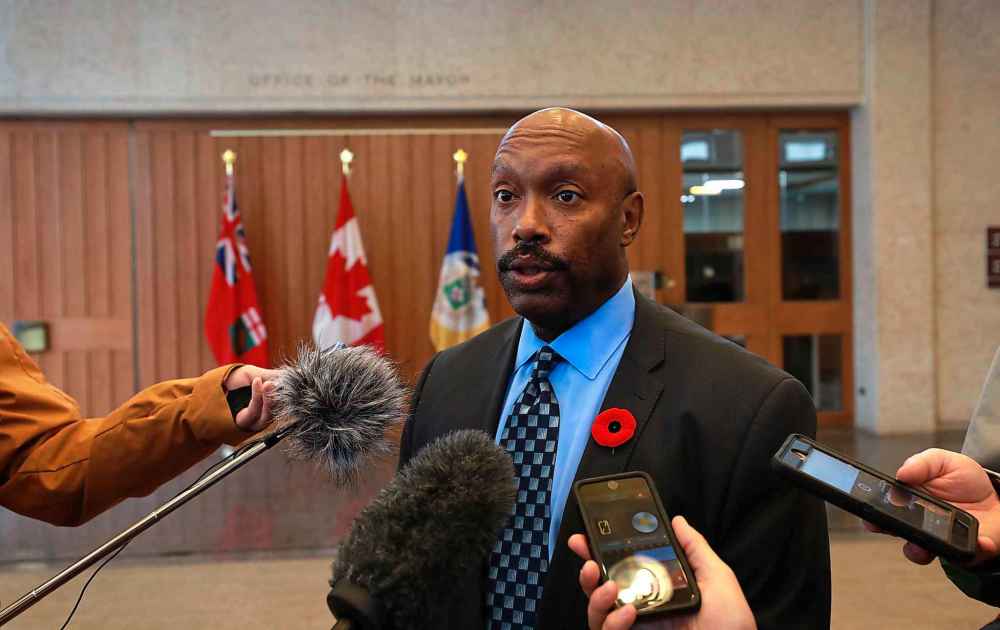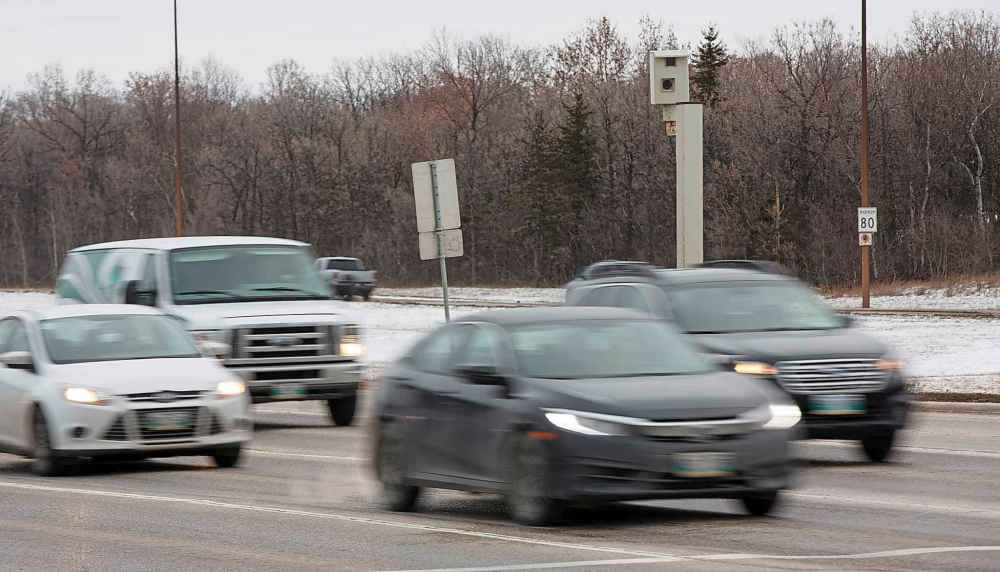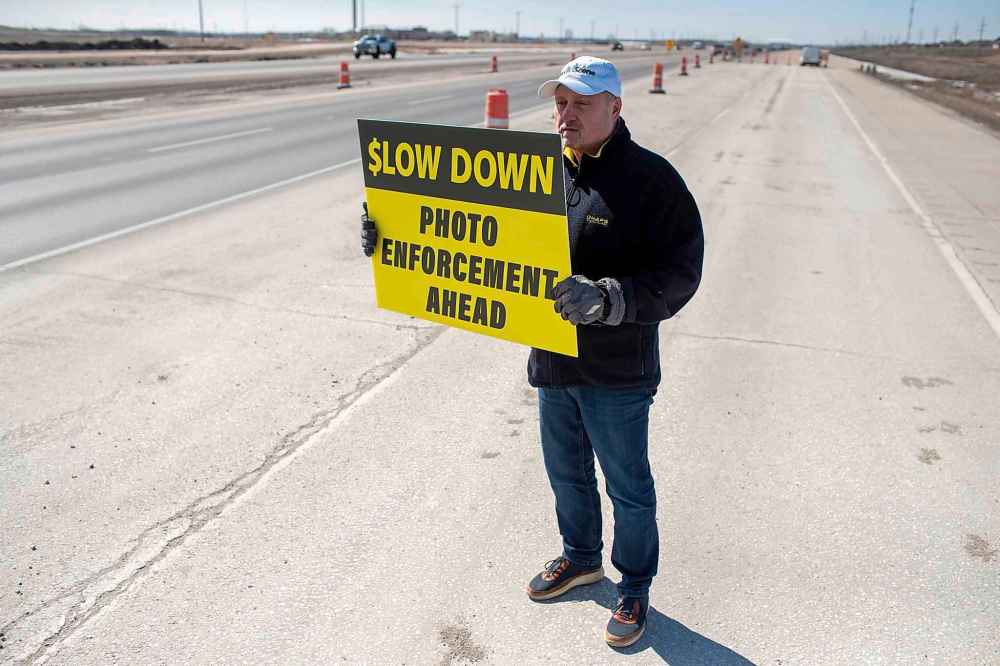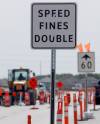Photo radar must be expanded to residential streets: police board chair
Read this article for free:
or
Already have an account? Log in here »
To continue reading, please subscribe:
Monthly Digital Subscription
$0 for the first 4 weeks*
- Enjoy unlimited reading on winnipegfreepress.com
- Read the E-Edition, our digital replica newspaper
- Access News Break, our award-winning app
- Play interactive puzzles
*No charge for 4 weeks then price increases to the regular rate of $19.00 plus GST every four weeks. Offer available to new and qualified returning subscribers only. Cancel any time.
Monthly Digital Subscription
$4.75/week*
- Enjoy unlimited reading on winnipegfreepress.com
- Read the E-Edition, our digital replica newspaper
- Access News Break, our award-winning app
- Play interactive puzzles
*Billed as $19 plus GST every four weeks. Cancel any time.
To continue reading, please subscribe:
Add Free Press access to your Brandon Sun subscription for only an additional
$1 for the first 4 weeks*
*Your next subscription payment will increase by $1.00 and you will be charged $16.99 plus GST for four weeks. After four weeks, your payment will increase to $23.99 plus GST every four weeks.
Read unlimited articles for free today:
or
Already have an account? Log in here »
Hey there, time traveller!
This article was published 14/11/2024 (381 days ago), so information in it may no longer be current.
Winnipeg needs more roving photo radar vehicles to nail speeders anywhere in the city — not just by schools, playgrounds and construction zones, which are the only locations allowed under legislation, the chairman of the Winnipeg Police Board says.
“We don’t have radar on residential streets, just collector streets, but now we see vehicles going high speed into residential areas,” said Coun. Markus Chambers.
He wants the provincial government to green-light a major expansion of the photo radar program and amend the law that governs its operation.

“This legislation came before Waverley West, Amber Trail and Sage Creek (were built),” said Chambers on Thursday, noting the legislation also locks in place the 2001 technology used by the 49 radar cameras set up at intersections throughout the city.
“The technology that exists now also captures excess noise from modified mufflers as well as catching distracted drivers on cellphones sitting at lights. This could allow all of this technology for the streets.”
The Winnipeg Police Service 2023 report on the program says mobile units captured 80,424 vehicles in violation, which represented an increase of 10.26 per cent in violations from 2022.
Chambers made the comments while discussing a survey currently being conducted by the Winnipeg Police Service’s “Just Slow Down” campaign.
One of the questions the survey asks Winnipeggers is whether they would support or oppose expanding photo radar to other spots where statistics show “high incidents of speeding and/or collisions caused by speeding.”
The survey, which runs until Nov. 29, is aimed at gauging Winnipeggers’ awareness of the recent ‘WTF? Why That Fast?’ campaign that was plastered on billboards and social media during June and July. It also asks their opinions on photo radar.
Insp. Marc Philippot of the traffic division said the questions were developed by the research team itself.
“It would be much safer for cyclists if people followed the speed limits.”–Marc Cohoe
“The questions posed were to gauge traction from the campaign and overall attitudes about photo enforcement,” he said.“There was nothing more behind the question and shouldn’t be interpreted any other way.”
Philippot said photo radar is one of the ways police enforce speeding violations.
“The reality is that police cannot be everywhere so photo enforcement is one of our tools to assist in this regard,” he said.
“We continually assess areas of concerns and deploy our mobile operators accordingly.”
Todd Dube, founder of Wise Up Winnipeg, a citizen group that lobbies for fair traffic enforcement, said he fears the survey question could lead to the deployment of more photo radar cameras simply to raise more money for the cash-strapped municipal government.
The report on the program notes revenue from tickets is collected by the province and a portion is remitted to the police service. In 2023, the service received $11,573,601. After subtracting $5.7 million for expenses, police put $5.9 million back into the budget for other police initiatives.

“Winnipeggers have never been opposed to mobile photo enforcement; they have been opposed to the obvious abuses of mobile photo radar,” said Dube.
He said a section of Panet Road, a four-lane, divided thoroughfare, is a photo radar cash cow for the city because its speed limit is 30 kilometres per hour, owing to a school being located there.
“It should not be reduced for the same reason Pembina Highway cannot be, by regulation, as it is a wide-open non-residential traffic artery,” said Dube.
He also noted that, after a fight in court, the city extended the duration of amber lights by 0.7 seconds, on traffic signals across the city, and violations for drivers who ran a red light dropped by 98 per cent.
“These abuses of engineering and actual safety are long overdue to be ended in Winnipeg,” said Dube. “The real issue here is that the Winnipeg and Manitoba governments continue to ignore these abuses in favour of the resulting cash flow.”
On the flip side, Marc Cohoe of Bike Winnipeg said cyclists would be in favour of photo radar vehicles being operated in more locations.
“It would be much safer for cyclists if people followed the speed limits,” said Cohoe.
“It’s like having a law that says you can only watch movies on VHS.”–Mayor Scott Gillingham
“Cyclists have the most to lose in collisions and a higher speed leads to injury and death… for us it’s just a matter of providing access to photo radar to where the issues are and let the city be able to choose where they can be.”
Mayor Scott Gillingham said he would be willing to work with the provincial government to have photo radar enforcement legislation updated.
“Current laws mandate the use of outdated technology, limiting our ability to respond effectively to safety concerns,” said Gillingham, noting the technology is 23 years old.
“It’s like having a law that says you can only watch movies on VHS. We need legislation that keeps pace with advancements in photo enforcement technology to focus on improving road safety, not increasing revenue… whether it is in school zones, construction zones, and anywhere at traffic lights.
The mayor said the controversial program was motivated by a desire to make streets safer.
Lisa Naylor, Manitoba’s infrastructure and transportation minister wouldn’t be pinned down on whether the government supports an expansion of photo radar.

“The province is engaged in positive, collaborative dialogue with the Winnipeg Police Service about their ongoing challenges with photo radar.
“Our government is ready to work collaboratively to determine the best route forward for this program.”
kevin.rollason@freepress.mb.ca

Kevin Rollason is a general assignment reporter at the Free Press. He graduated from Western University with a Masters of Journalism in 1985 and worked at the Winnipeg Sun until 1988, when he joined the Free Press. He has served as the Free Press’s city hall and law courts reporter and has won several awards, including a National Newspaper Award. Read more about Kevin.
Every piece of reporting Kevin produces is reviewed by an editing team before it is posted online or published in print — part of the Free Press‘s tradition, since 1872, of producing reliable independent journalism. Read more about Free Press’s history and mandate, and learn how our newsroom operates.
Our newsroom depends on a growing audience of readers to power our journalism. If you are not a paid reader, please consider becoming a subscriber.
Our newsroom depends on its audience of readers to power our journalism. Thank you for your support.







